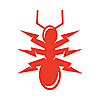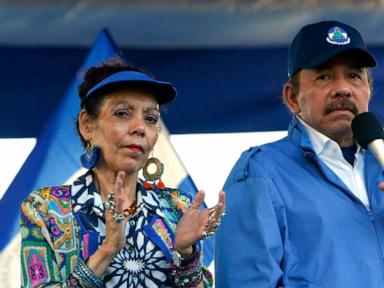ARTICLE AD BOX
The Ethereum Layer 2 (L2) ecosystem keeps growing, really fast. The total value locked (TVL) across all the L2 networks reached a remarkable $37.62 billion.
This was a 3.03% increase over the week before, by far the biggest jump in recent memory. And it’s not hard to figure out why: As Ethereum’s Layer 1 (L1) continues to suffer from scalability problems and exorbitant gas fees, more and more projects looking to build on it are simply skipping L1 and going right to L2. And you know what? That makes dApps built on the Ethereum framework as a whole a lot more efficient and a lot more cost-effective.
 According to @L2BEAT, the total TVL of Ethereum Layer2 networks has reached $37.62B, up 3.03% in the past 7 days.
According to @L2BEAT, the total TVL of Ethereum Layer2 networks has reached $37.62B, up 3.03% in the past 7 days.
Top 5 L2s by TVL:
1⃣ Arbitrum One – $14.52B (+2.1%)
2⃣ Base – $12.35B (+3.8%)
3⃣ OP Mainnet – $5.39B (+4.5%)
4⃣ ZKsync Era – $950M (-1.2%)
5⃣ Starknet – $690M… pic.twitter.com/7exDSF3fIO
— OKX Ventures (@OKX_Ventures) February 23, 2025
The increase in TVL across Layer 2 networks is a favorable development for the Ethereum ecosystem. Of the top five Layer 2 networks in terms of TVL, Arbitrum One, Base, and Optimism Mainnet are out in front, and each of these networks showcases truly impressive growth, even when the overall crypto market seems to be sputtering.
Top Ethereum Layer 2 Networks by TVL
Arbitrum One heads the pack with a total value locked (TVL) of $14.52 billion, showing a 2.1% increase in the last seven days. The Layer 2 hasn’t just secured its place; it’s a widely adopted solution for Ethereum users. Arbitrum, in this case, isn’t just the most dominant; it’s the most impressive scaling solution for Ethereum to date. Optimistic rollups, which are a sort of layer 2 scaling solution for Ethereum, power it along with some relay logic.
Right behind is Base, a Layer 2 solution built by Coinbase, with a TVL of $12.35 billion. Base has seen an impressive 3.8% bump in its TVL, highlighting its rapid growth and rising popularity among developers and users. Base most likely gets that rising popularity from its seamless integration with Coinbase’s established infrastructure and the strong adoption that comes from being one of the most prominent crypto exchange platforms.
With a TVL of $5.39 billion, Optimism Mainnet occupies the third position, and it is a place the rollup race frontrunner seems happy to be in, showing a 4.5% uptick over the week. The faster, cheaper Layer 2 network certainly accommodates both big and small apps looking to efficiently scale. That said, the major use case of Optimism’s rollups is still ahead of it: like the Layer 1 Ethereum network itself, the Optimism rollup is still a work in progress.
By contrast with the rising stars that are Arbitrum, Optimism, and Base, which focus on using optimistic rollups, ZKsync Era and Starknet, both of which work on a type of zero-knowledge rollup called zk-rollups, have seen somewhat slower growth. With a total value locked (TVL) of around $950 million, ZKsync Era is in fourth place among layer-2 networks, but it lost a slight 1.2% in TVL over the past week. Starknet, a network that uses zk-rollups, has shown a more solid growth path with a 3.5% increase in TVL over that same week. Its only current figure is about $690 million. While both networks are working on what is thought to be a more advanced way of doing a rollup, they are in the early stage of what appears to be a nascent adoption story compared to the optimistic developments surrounding Arbitrum and others.
Arbitrum DAO’s Investment Proposal Sparks Controversy
Although the overall growth of Ethereum’s Layer 2 ecosystem is quite promising, one recent development has caused eyebrows to raise in the Arbitrum community. The Arbitrum DAO Growth Management Committee (GMC) recently proposed a plan to invest 7,500 ETH—valued at about $12 million—into three non-Arbitrum native protocols: Lido, Aave, and Fluid. The proposal has been met with some intense backlash from several DAO representatives and community members who are not too pleased with the idea of investing what they see as community funds into non-Arbitrum native projects.
The Arbitrum DAO Growth Management Committee (GMC) recently proposed to invest 7,500 ETH in three non-Arbitrum native protocols, Lido, Aave and Fluid, sparking community criticism. Several DAO representatives criticized the proposal for ignoring Arbitrum ecosystem native…
— Wu Blockchain (@WuBlockchain) February 24, 2025
Some critics have expressed unease that the proposal favors investments made outside the ecosystem of Arbitrum. Arbitrum, a premier Layer 2 solution on Ethereum, has its own growing ecosystem of dApps and protocols. Many people associated with the Arbitrum project or who work in its ecosystem believe that funds should be directed toward supporting and investing in these “native” projects to secure the Arbitrum network’s sustainable growth.
The pushback comes from a belief that the proposal neglects the native Arbitrum projects that could gain from further investment and backing. A number of DAO members contend that investing in protocols outside of Arbitrum could squander resources on things not likely to pay off in the long term. They see such investments as a step toward dulling the network’s competitive edge in the Layer 2 race—an edge that’s necessary if Arbitrum’s going to grow and thrive.
The proposal has its defenders in the Arbitrum community, who make the case that relationships with other leading DeFi protocols—Lido, Aave, and the like—are worth pursuing. Doing so could yield “cross-network integrations” that provide more services and better ones to Arbitrum users; could bring “significantly more liquidity,” in the words of one community member; and could, overall, enhance “system functionality,” which should be the main focus of any blockchain community.
Looking Ahead: Layer 2’s Role in Ethereum’s Future
The Ethereum ecosystem’s ongoing development and growth signal a bright and promising future for this ever-expanding ecosystem. Layer 2 (L2) solutions have emerged almost alongside Ethereum itself, offering a way to overcome the challenges posed by using the Ethereum mainnet as it currently exists. When we look at the L2 landscape, we see an almost unending array of choices. The L2 world delivers a well-developed, steadily increasing set of options.
The debate over Arbitrum’s investment proposal underscores a more profound, emerging discussion about Layer 2 governance and funding. As Arbitrum and other Layer 2 networks compete for users and builders, they face a fundamental choice: to invest in external projects that might yield high returns (but then again, maybe not), or to focus on internal developments that strengthen their own ecosystems? There are compelling arguments on both sides.
It is evident that scalability is going to be a critical theme in the years ahead, especially with the advent of Ethereum’s proof-of-stake system and the ongoing development of Layer 2 technologies. These networks will not only grow and mature but also become quite consequential in terms of the overall blockchain ecosystem—much more so, I venture to say, than with their predecessor systems. The push toward decentralized finance and permissionless blockchain applications will take place largely on Ethereum and impact the broader blockchain economy.
Disclosure: This is not trading or investment advice. Always do your research before buying any cryptocurrency or using any services.
Follow us on Twitter @nulltxnews to stay updated with the latest Crypto, NFT, AI, Cybersecurity, Distributed Computing, and Metaverse news!
Image Source: limbi007/123RF // Image Effects by Colorcinch
.png)
 3 hours ago
4
3 hours ago
4








 English (US)
English (US)